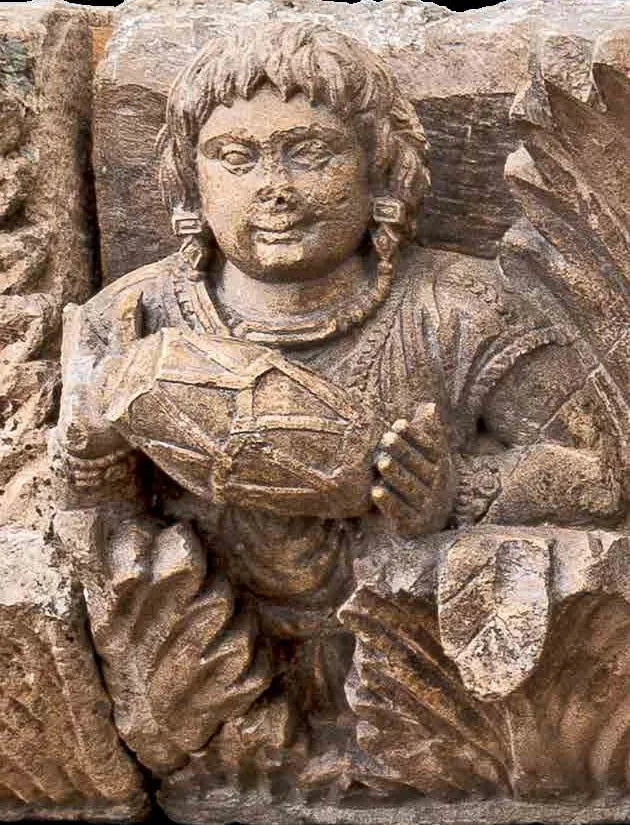The following year, an expedition led by M. E. Masson unearthed an ancient monument, as well as numerous fragments of a sculptural frieze depicting musicians.
According to research, the Airtam fortress was built to protect the crossing over the Amu Darya during the time of the Greco-Bactrian rulers, in the 2nd century BC. This fortification was the basis for the construction of a Buddhist temple in the II-III centuries AD. The elongated white stone blocks of the discovered frieze adorned the entrance wall or pillars of the temple.
On the blocks, among two rows of very large, somewhat schematized acanthus, bust figures appear - mostly female, with musical instruments, flowers, vessels, garlands in their hands. So, in the upper part of the frieze, at an equal distance from each other, a trumpeter is depicted, followed by four characters playing the oud, drum, chiltara and chang. Another figure is a woman holding a bowl for gifts.
Each character has earrings and beads that look like typical Indian jewelry of the time. Images of people with flowers and gifts have also been preserved.
According to some researchers, the theme of the frieze is most likely connected with Parinirvana, the Great Death of Gautama Buddha, when, in the words of Ashvagosha’s poem, “maidens poured flower rain from the sky, music thundered in the heavens.”
In 1939, by decision of the government, the Airtam frieze was donated to the State Hermitage.
Source: "Collection of the State Hermitage" 8 volume. The general sponsor of the project "Cultural legacy of Uzbekistan in the world collections" is the oilfield services company Eriell Group._IxOtraQ_3.webp)

_9txp3Fm_3.webp)
Where is the rare artifact found in Airtam located now?
In 1932, a group of archaeologists found a fragment of an architectural frieze in the waters of the Amu Darya. After that, archaeological excavations began in the area.
